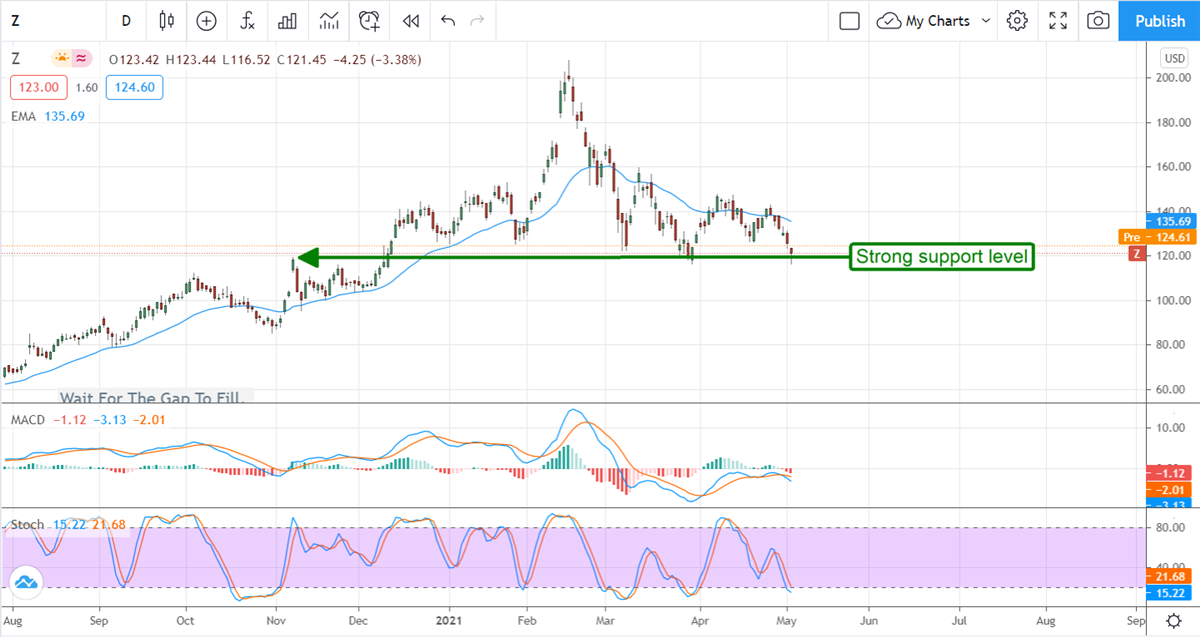Zillow Group Is Ready To Rocket Higher Zillow Group (NASDAQ: Z) just reported a very good quarter and one that is supported by so many positive factors we're not sure where to begin. The company is thriving on the strength in demand from the housing market,
This story originally appeared on MarketBeat

Zillow Group Is More Than A Real Estate Story
Zillow Group (NASDAQ: Z) just reported a very good quarter and one that is supported by so many positive factors we're not sure where to begin. The company is thriving on the strength in demand from the housing market, both buy-side and sell-side, and also an example of the accelerating shift to digitization happening around the world. Our evidence of this is that sell-side interest in Zillow's platform outpaced the buy-side which we take to mean real estate agents and sellers of property see not only the value in Zillow's platform but the need to use it.
Zillow Blows Past Consensus As Strategies Gain Traction
Zillow has been working hard to capitalize on its strengths, develop new offerings, and positions itself for growth and the results have begun to show. The company delivered $1.22 billion in consolidated net revenue for the quarter which is up 54% sequentially, 8.0% from last year, and 168% from 2019's Q1. While the strength was expected, the analysts were predicting a much lower $1.12 billion or about 1100 basis points less than the actual.
On a segment basis, the IMT segment (platform and core services) led with 35% YOY growth driven by a 38% increase in Premium Agent revenue. The Homes segment is accelerating but fell from the YOY period offsetting the gains. Turning to the Mortgage segment, the mortgage segment is up 169% from last on strength in refis and new business. The company reports traffic improved to more than 221 million MAUs and 2.5 billion quarterly visits.
"We are seeing the benefits of the investments we have been making in the growth of our businesses and more recently in consolidated Adjusted EBITDA, despite the initial challenges of COVID-19 during 2020. This increased profit generation in recent periods after a heavy investment period gives us confidence that the bets we are making across the business are accretive, and we are allocating our time, our people, and our capital in the right places to serve customers."
Moving down to the margins and income, company margins widened significantly from last year due to the strength in the IMT segment. IMT margin alone improved by high triple-digits to more than offset weakness in other areas. The GAAP net income of $52 million reverses a loss in the prior-year period to provide $0.20 in GAAP EPS or $0.13 better than expected and gains are expected to continue throughout the year. The company's guidance is calling for sequential revenue growth in the range of 3% (60% YOY versus a relatively difficult comp) with EBITDA slightly lower. The revenue guidance is above the consensus and the EBITDA miss below but that's due to increased investment in future growth. We don't have a problem with that.
The Technical Outlook: There Is Upside In Zillow's Chart
The analysts are only moderately bullish on Zillow's stock with a 50/50 split between buy and neutral ratings but the consensus price target is still well above the current price action. At $158.25 it is expecting about 30% upside from current price action and we think that is just the beginning of what investors should expect. With share prices up 2.15% in early trading, we see this stock on the verge of completing a major bottoming action that could send the price up to the $200 level if not higher.
The stock is putting in a firm bottom at the $120 level and confirming a previous price peak as support. The action is complemented by signs of support within both the MACD and stochastic indicators that suggest the stock is at an extreme low in its price and ready to spring higher. There will probably be some resistance to higher prices in the range of $136 to $140 consistent with the 30-day EMA and the recent price peak. Once that level is broken it should be fairly clear sailing until the $160 and $180 price levels where there may be some turbulence.
Featured Article: Yield Curve









